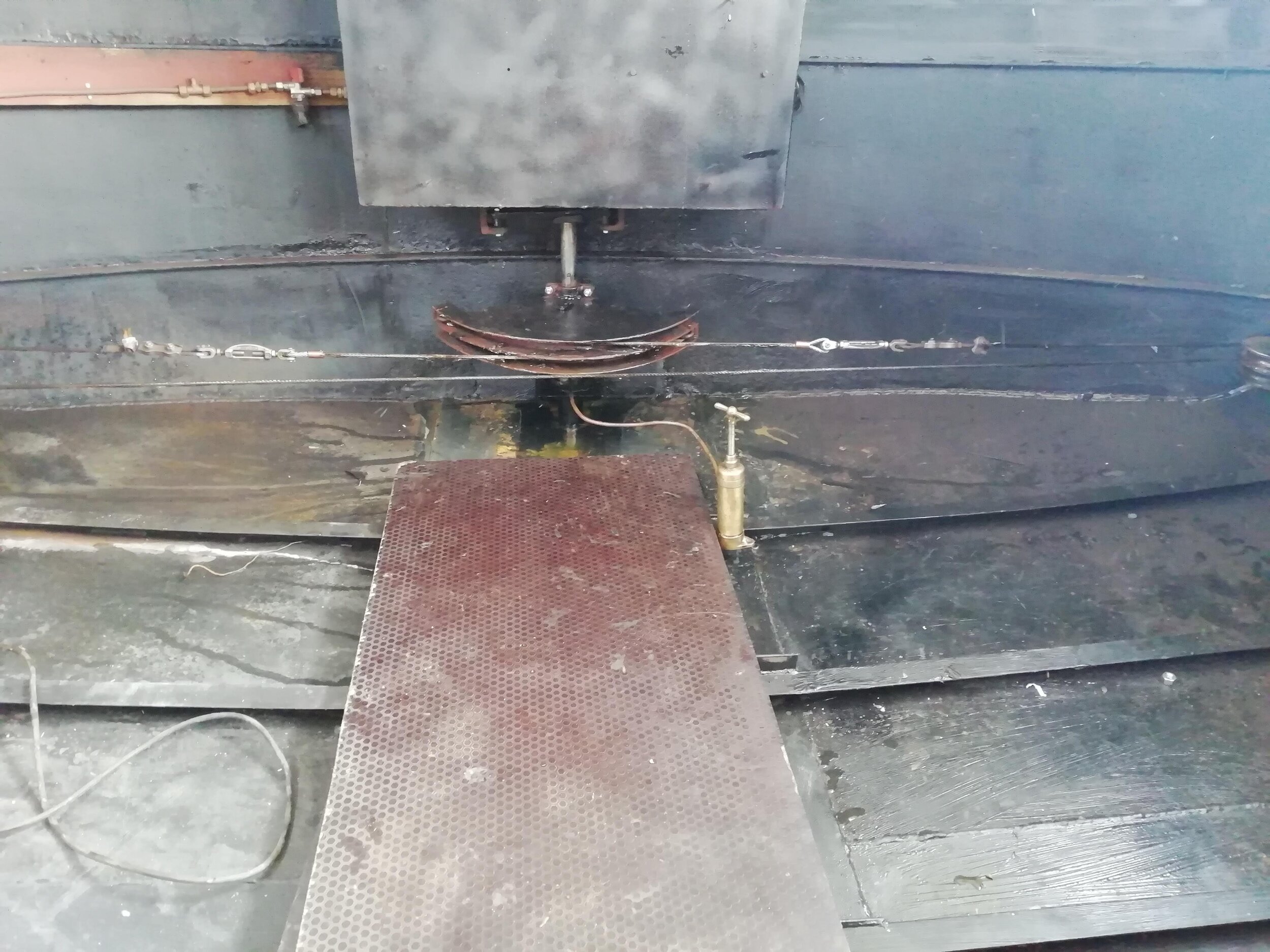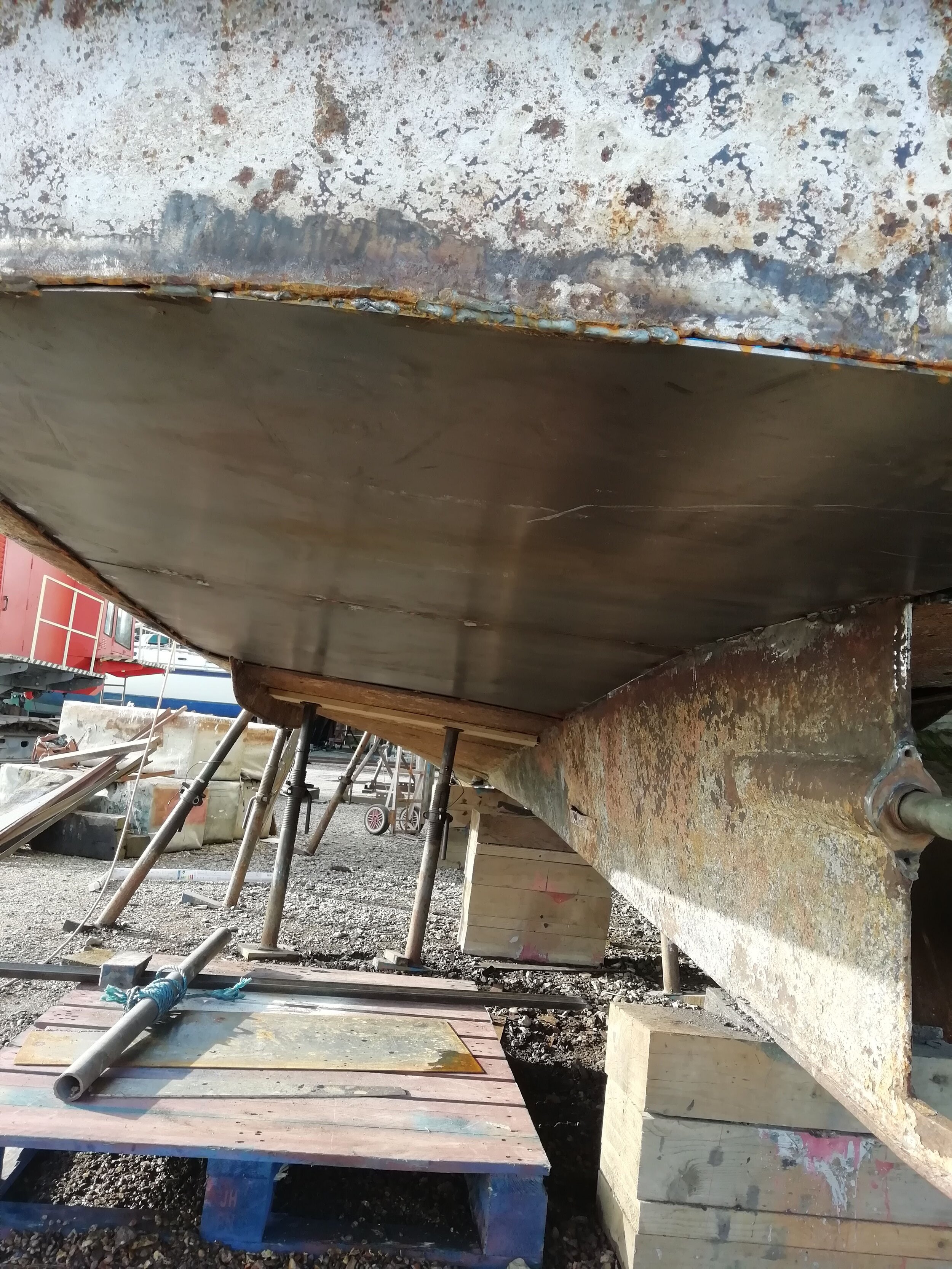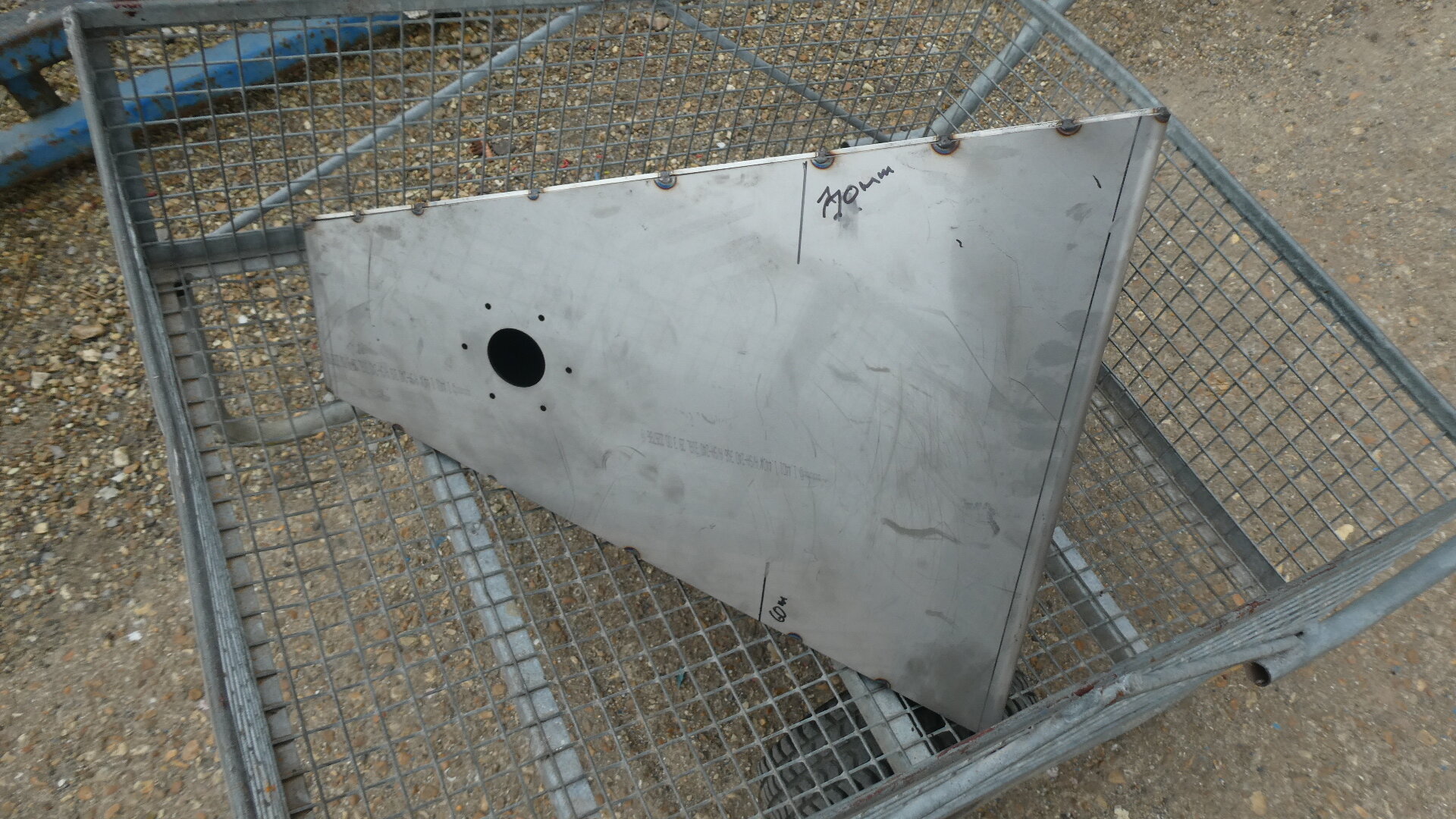The Hull and Bilges
A 1959 classic steel hull motorboat with little maintenance and neglect over the years - you don’t get away lightly……
The Work
October 2017
During the week Deux was lifted out of the water for us to start the much need job of anti-fouling and replacing anodes. That same week Storm Brian started making its way across the British Isles, hitting the South East coast of Hampshire at about the same time as our car pulled into the marina carpark. We found Deux on the hard in the marina, propped up by what looked like way too few supports and in desperate need of some TLC. So with gusts of wind up to 85 mph and driving rain, Patrick and I put on our painting clothes, wellies and rainproof jackets, dug deep deep down for our sense of humour, topped up our hot drink(s) with rum and set about getting the job done. There was no way to know how long it had been since Deux had been antifouled, the hull was worse than we thought it would be and there were no anodes left either. It took two weekends, two coats of primer, one coat of red antifoul, one coat of black antifoul, more than a bottle of rum and new anodes all round before we could whisper exhaustedly “done”. I must say once we stumbled backwards to survey our work – she looked a beaut! Patrick let me admire my handiwork for about 10 minutes before he stepped away from me and quietly explained that we are going to have to do this all again in a few months as he would like to take the hull down to bare steel! I just walked away, adding a case of rum and waterproof mascara to my shopping list.
Some pics as an indication of the before and after
November 2018:
We knew that once we opened up the floors and had a good look, we were going to be met with a messy job - we were not disappointed!
We FINALLY got the (many) rain leaks under control but the main engine has had a slow oil leak for some time and all this oil has been collecting in the bilges!!
Our two bilge pumps, one under the galley floor and one in the forecabin, have been doing the best they could do, but it eventually came down to a wire brush and rubber glove job.
Patrick started with the forward bilges. These were not too bad, just dirty and a lot of gunge with diesel and oil seepage from the engine room bilge. At the moment the shower water runs down into this bilge and we need to make some changes to that - at a later stage. Also the anchor chain doesn’t have a sealed locker with a separate drain overboard, which means all the sand, weed and water coming up with the anchor chain drains into this bilge.
Patrick vacuumed out, painted two coats of a rust converter, two coats of red-oxide and two coats of white bilge paint (still one go) which will leave us with three coats of bilge paint and all is sparkly clean. Lovely.
January 2019:
The galley bilge is another story and I held my breath as Patrick lifted the floor and then we spent most of the first day asking “why ….?”, although I was tempted to also ask “will we ……?”.
The bilge was FULL of rust. At first look, bearing in mind this was a steel hull, it seemed bad. More than that, the bilge had a fibreglass sheath ..… “why?. Water from (so many) leaks in the coach roof and also from the rudder post, had periodically filled the bilges and this had seeped under the fibreglass causing rust to form between fibreglass and the hull.
On the areas where there was no fibreglass, a little tapping with a hammer and a few goes with a steel brush revealed some holes. Ripping off the fibreglass revealed even more holes. Patrick assured me that the plates welded on the outside of the hull covered these holes, keeping the water out, however I still needed reassurance - “will we sink and how comfortable is it to sleep in a life jacket?”
Deux is coming out in May 2019 for a lot of work : We will be removing the main engine for a complete overhaul. We will be fitting new fuel tanks as the current tanks are just breeding grounds for the diesel bug and we will never win that war. We will cut out the rust on the deck and needle-gun the decks to bare steel and paint and paint. Patrick will then also grind out the really rusty parts in the galley bilge, reducing any chance of water sitting between the old and new steel plates causing more rust.
For now we are just cleaning up, removing the fibreglass (why is there fibreglass??) and will treat with anti-rust paint to slow down the damage and chances of holes (so we don’t sink).
In the meantime I am shopping for wooden bungs and increasing our number of wine bottle corks the best way I know how.
May 2019
The engine is out! (read more)
And while I like to think I was prepared for what the bilges would look like - I wasn’t. Years of gunk and muck - no other way to describe it. Was grim to start with….
This was going to need more than a clean up !!
March 2020
The engine room is looking a lot better - dry and clean. Now for some painting.
July 2019
We have had a surveyor out to have a look out the hull, both inside and outside. I held my breath and it ended on a good note….. once he got a chance to climb into the engine bay and check out the bilges there and those in the fore-peak. Up until that point I am sure he was ready to peel the backing from a pile of “condemned” stickers.
Seems the galley is going to need more work than we thought, but nothing that a welding qualification/experience and a wallet can’t solve!
So here's the problem ......
We have some seriously corroded frames which are welded to the (original) hull. These have been patched and strengthened in the past. Both the frames and original steel plates are corroded and rusted.
The hull has been over-plated but these are not attached to the frames.
Currently we are still at the stage where we look at all of this and sigh.
September 2019
We are inching our way towards something. Its a slow and messy job but I believe we are seeing some light (besides that which is glaring through the bottom of the rusty hull !!). I keep reminding myself that we have now discovered the worst there is and we have a plan…… We have removed all the fiberglass and all the loose rust and despite what it looks like, some of the steel is in good condition, strong and won’t need replacing. We are going to definitely need to cut out and replace the two plates at the front section of the galley as this was just rusted and rotten through and there was no strength in the steel. We will also need to replace the frames for that section. We have to do it slowly and piece by piece or we risk loosing the strength and structure of the boat! Looking at some of the pieces of steel we have removed its hard to believe she still floated - I think the rust was plugging the holes (yikes).
October 2019
It feels like we might be getting somewhere. Although it may be too soon to tell… What I can say with confidence at the moment is that we are NOT going back into the water just yet…. there is a big hole in the bottom of our boat and no amount of wine corks is going to plug that, despite my efforts.
We have had the one piece of hull cut out and that will be replaced with new steel.
November 2019
The quadrant on the rudder has been removed and we need to replace the rudder stock mount and possibly some of the surrounding steel (yes that is light shining through the mount)
All done!
November 2019
We decided to bite the “steel” bullet!! Cutting out and patching bits just didn’t fill us with confidence and I am sure the insurance companies were going to feel the same way. We resigned ourselves to the obvious - it all needed to be cut out and replaced.
So following some enquiries and recommendations, ML UK stepped in. This steel fabrication, welding, engineering company knew exactly what to do and within a few weeks we had shiny new steel hull and new frames.
January 2020
The work on the outside of hull started. First she was grit shot blasted and a good check was done on the hull. Any weak spots and holes were noted for extra welding.
Deux was then dipped into the water for a few hours to make sure there were no leaks. I was ready, corked wine bottle in hand, just in case a cork was needed urgently. Fortunately (unfortunately) ML UK Steelworks had done such a professional job and there was no need for any emergency wine drinking.
Then it was just a case of paint, paint, paint both inside and outside, using interzone 954 two pack epoxy paint.
March 2020
Grinding down the first coat of paint in the galley as it hadn’t adhered properly in sections (possibly due to oil residue). This also meant the surface was smooth with no rough bits to allow dirt to attach and collect.
Painting painting painting …
May 2021
The painting continued…. after two coats of 2-pac epoxy, we did two coats of red oxide. It took so long as we needed to get under the frames, under the edges, behind the exhaust and the steel just got harder and more uncomfortable. (Disclaimer… “we” actually means Patrick)
June 2021
The painting continues. This time I lent a hand (reluctantly). The plan is three coats of white bilge paint and stick-on insulation before work on the galley starts
March 2020
The painting of the outside hull was a little more serious. Starting with interzone 954, . This will be followed by another coat of interzone. Then underwater primer and finally a coat anti-foul. That’ll do it.
April 2020
Finally…. painting completed (well on the outside hull anyway). We will still add a thick black top-line to finish it off, but for now we think she looks fab.
Anchor Locker
The anchor chain drops through front deck directly into a open cavity in the forepeak (behind a small door). There it lies; coated in seaweed and anything else pulled up with the anchor. The water drips out below and pools in the bilges. Not a great set up!
We had the inside of the boat sandblasted, including this dark dingy hole. Then it was onto the normal procedure….. black epoxy paint, two coats of red oxide, two coats of white locker paint!!
Solent Welding and Fabrication put together the locker for us (thanks to Patrick’s design) and it fits snugly into place. We now have a stainless steel pipe running up to the deck which will house the chain which drops down into the locker. The locker has a detachable plate which will give us access to the chain. It also has a drain and a hose so any water runs out to the sump pump in the bilges, which has an auto and manual switch. We can now also use the extra, dry space for storage.










































































